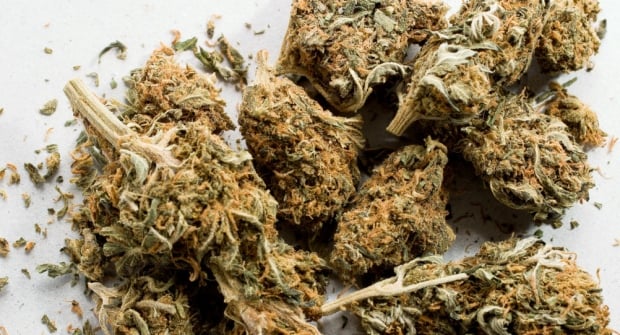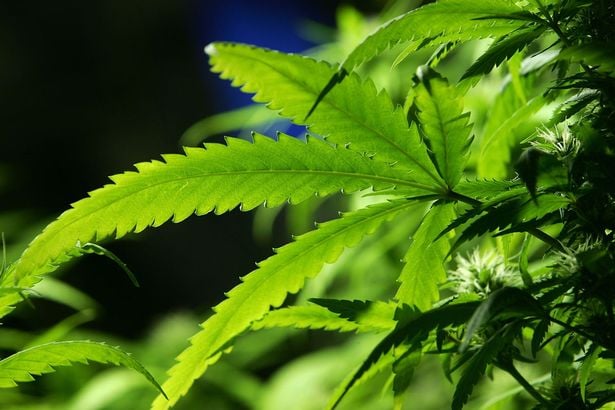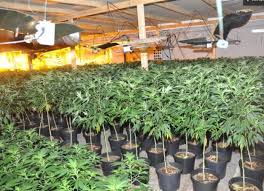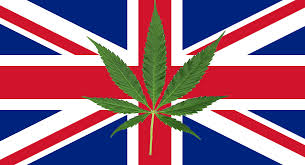
All you need to know about Cannabis
CONTENTS
Flowering plants of the botanical order Rosales which day occurs wild across large parts of the world, thriving in a wide range of soil types in countries from the temperate ranges to those in the tropics. The cannabis plant seems to originate in countries lying to the east and South East of the Caspian Sea in western Asia. Indeed, the world’s largest areas of wild, uncultivated Cannabis are thought to be found in the countries of Kazakhstan and Kyrgyzstan.
However, almost certainly as a result of human involvement with plants. It is now farm growing either wild or under cultivation across the entire globe. Three main varieties belong to the genus cannabis, Cannabis Sativa, the fast-growing variety reaching 2 to 4 metres in height in a single season. Cannabis Indica and Cannabis Ruderalis, both slower growing and generally not reaching more than two metres in height. In an effort to increase yield and potency, growers across the world have interbred these three varieties to produce hybrid types. Through a process of cloning, enormous quantities of true breeding seeds from these hybrids are now available.
All three natural varieties produced within them a number of complex chemicals called cannabinoids. The most psychoactive of these, and thus the most important in recreational drug terms is Tetrahydrocannabinol, known commonly as THC. Of the three varieties Cannabis sativa produces THC in the highest concentrations and has historically been the preferred variety of the plant. In sexual terms, cannabis plants are known as Dioecious, that is there are two distinct forms, a male and a much larger female. Both genders produced THC, but the amount produced by the female is significantly higher than that produced by the male. In order to make the THC available to the user. The plant is preferred for use in three major ways, resulting in herbal cannabis, cannabis resin and cannabis oil.
Some slang terms for Cannabis: Grass, weed, herb blow, puff, wacky baccy, dope, tips, skunk, sativa, Ganja, dagger, hemp.
Cannabis is at its simplest, the dried and chopped leaves and flowers of the cannabis plant, usually compressed into bales of variety varying sizes. The finest quality and the most potent herbal cannabis are produced by drying and chopping the flowers, known as the boots of the female cannabis plant as it approaches sexual maturity. This type of herbal cannabis, known on the streets as bud, contains the highest levels of THC in herbal form and attracts the highest prices. Traditionally, almost all of this bud type herbal cannabis was produced using female flowers from the cannabis sativa plant.

However, in recent times it has become increasingly common for the female flowers of hybrid varieties, such as those known as skunk or Super Skunk to be used in this process. Less potent and therefore cheaper. Herbal cannabis is produced by mixing quantities of dried flower and dried leaves in differing ratios.
Generally, the higher levels of THC are to be found in leaves of the female plant, and in particular. Those growing near to the flowering top of the plant. Thus, the best of these cheaper types consists of high ratio flowers together with upper female leaves. The slang name tip or tips? Is sometimes used to describe such herbal cannabis. However, truck producers are often more interested in the quantity of saleable drugs that they can produce rather than its quality and so much of the herbal cannabis reaching the retail customer is of generally poor quality and thus of low potency. It can consist of a mixture of chopped leaves of all sizes from both female and male plant stems and small quantities of flower buds and some seeds.
Another issue that affects quality is that adulteration. Much of the herbal cannabis on the world streets has been adulterated with other substances. Some of which are in themselves harmless, and some of which may present potential health risk to the user. Most adulterants have been added to bulk out and thus increase the weight of the product. This will often have been done within the source country of the drug, but he's also often carried out by small suppliers at street level to increase their sales profits. Some adulterants are added to disguise the poor quality of the products waterfall the customer into believing it to be a higher quality and more potent variety. For example, by adding colouring agents and oils in imitation of herbal types containing higher quantities of resin.
Attention has been drawn by a number of agencies in recent times, so the adulteration of herbal cannabis with minute beads of glass. Claims of being made that high quality female flowering cannabis heads often have a slight sparkle. Adding glass beads to cheaper mixes is done with the intention of giving the result of products a similar sparkle.
Most samples of herbal cannabis are a greenish brown or green greyish green in colour. Although on rare occasions samples are seen that are purple, pale green or golden. Parents, teachers and others with responsibility for young people often think they have discovered herbal cannabis in the possession of one of their charges, when in fact what they have found is loose tobacco. Herbal cannabis can be mistaken by those without experience for various forms of tobacco juice to its similar appearance. However, close examination of the material should eliminate that mistake.
Most samples of tobacco have been produced by chopping dried plugs of tobacco leaves that have been formed from several leaves from different tobacco varieties, layered together and cured. This layering can be seen in the form of strata of different colours in the small shreds of tobacco. Cannabis has no such layering. Round seeds approximately 5mm in diameter are often in herbal cannabis, whereas tobacco contains no such seeds. Tobacco often has a strong aromatic smell whereas herbal cannabis simply smells a little musty. In some examples of the modern skunk and super skunk varieties, this musty smell can be strong enough to be unpleasant, hence the names.
Cannabis resin is produced by collecting, drying and pressing the resinous extra date of the cannabis plant, particularly the female planet. These produce small hairs called tricomes all over the leaves and flower buds as the plants approached sexual maturity. They begin to exude tiny, sticky beads of colourless, resinous liquid which contain a high percentage of THC. The trichomes that are found all over the flower or bud of the female plant exude the large amounts of this THC laden liquid.
This liquid acts to absorb ultraviolet B. light and therefore serves as a natural sunscreen for the planet. As a consequence, when in bright sunshine the plant produces more liquid at the end of each of its trichomes and the flower then often has a sparkly appearance. It is this liquid exudate that forms the basis of all cannabis resin.
We've seen resident a variety of colours consistencies and falls. The variations in colour and consistency are mostly result of differences in climate and soil conditions between the various countries where the plant was grown, the methods used to collect the exudate and the expertise and thoroughness of the producer.
Resin colour can vary from the disperse blank through slate grey and every shade of brown you can imagine to a pale honey or straw colour. Some black forms are hard, shiny and brittle and could be snapped easily. Dark brown fine grain resins tend to be very hard and dense and very difficult to break up. The user often has to heat the resin block with a flame before being able to crumble it for use, a process often called roasting or toasting. Many of the paler coloured resins are soft and dry crumble easily in the fingers.
Resin can be sold in the form of an oily putty type of material; this product appears to consist of one of the more normal varieties of resin that has had oil added to it. This may actually be cannabis oil, or in many cases, anyone of a number of other known oils. The purpose of adding oil would seem to be in order to make the resin look at better quality. Whether cannabis resin is being prepared or large scale under traditional conditions in countries with a long history of cannabis production, or on a smaller scale in modern indoor growing facilities, or under the kitchen table conditions, the three basic methods remain the same.
Threshing and sieving are a traditional method of producing cannabis resin and is the most widely used method for commercial resin production. When sufficient numbers of people are involved in the process, it can be very efficient and is often used to produce enormous quantities.
It is the favoured method of resin production in traditional growing countries such as Lebanon, Morocco, Afghanistan, India and Jamaica. The process is designed to separate and collect the THC laden tricones. The plants are first harvested, harvested and laid out to dry.
The grower will not wish to disturb the plant during this process any more than is necessary, so as to avoid dislodging and the drying tricones. Once the crop is dry, the plants are prepared for threshing and sieving. Some producers will remove the dried female flowers for separate processing in order to obtain the highest quality resin containing the highest percentage of THC. Other producers will remove all of the largest stems and leaves to leave only flowers and thin stems with small leaves. This will lead to the production of resin of medium quality. Producers seeking to seeking to produce large quantities of low-quality resin will use the whole plant, including male and female types. Larger small leaves, stems of all sizes and some flowers.
Following drying, the plant is broken up and placed in the first of a series of sieves. The plant materials that agitated and threshed vigorously back and forth in the sieve so that the dried trichomes are dislodged and pass through the sieve along with small particles of plant material.
The resulting mixture is then passed through another sieve into a smaller mesh. This separates out further particles of plant material and allows through only very small particles. This process is continued through a series of sieves, each finer than the one before. Only the minute particles of dried, resinous sap with the high THC level found on the heads of the trichomes can pass through the final sieve.
The material that fails to pass through each sieve, with the possible exception of the remains of the stems, old leaves and seeds that remain from the first sieving is also collected for sale. It will contain varying percentages of THC. What remains in sieves early in the process will contain less THC than that from the later finer sieves. The material resulting from this process is then pressed into blocks of different shapes and sizes. Producers will often emboss the pressed blocks with a name or character to identify it as their products.
The traditional processes of threshing and sieving have been adopted by today's growers, both small and large. A number of websites exist that offer sieves and other equipment for use in this process, including a number of motorised threshers and sieves, thus removing the human labour completely.
Sometimes referred to as manual separation, the process of rubbing to collect cannabis resin is uncomplicated. It consists of rubbing the cannabis plant to break up the THC laden trichomes and collecting the resin that is released. At its simplest, this consists of rubbing the stems, leaves, or flowers of the cannabis plant with the hands which become coated in fresh resin. This is then removed by rubbing their hands together until the small ball of resin is produced. This is a process that can be repeated on the same plant a number of times during its life cycle. The most productive time occurs as the plants reaches sexual maturity, in other words, as it flowers and for a short time afterwards. Trichomes that are removed by rubbing at this stage will be replaced with fresh growth that can be harvested in its turn.
Another traditional method of manual separation is to use a tool to scrape the trichomes from the plant. These can be made from glass, ceramics or metal and the resin collected on them is then peeled off and rolled into a ball. This is not as effective as hand rubbing as it is difficult with a tool to reach all parts of the plant. However, it is a lot cleaner.
There are a lot of other unusual eccentric methods used, one grower related to us how he gently beat his palms with a bamboo cane and then repealed the resin off. Another story that we've heard is of growers dressing in leather jeans and jacket and running back and forth amongst the plants in an outdoor plantation so that their close become encrusted with resin. Whatever the exact method used, the intention is to break off the trichomes to release the resin.
The last of the three methods described in this article relies on the high specific gravity of resin as compared to the rest of the cannabis plant. It's a very simple method that is popular with small scale growers. The basic method is to dry the cannabis plant until it can become pulverised completely. The dry plant is then rubbed through a sieve into a container of water. The heavy resin will fall to the bottom whilst the lighter plant material floats to the top. The resin is recovered by decanting off the water and then dried before pressing.
Cannabis oil is produced by mixing either cannabis resin or plant material itself with a solvent such as grain alcohol, denatured alcohol, naptha or acetone. The solvent will dissolve the resin whilst the plant materials is left untouched and removed. The solvent is then evaporated off, leaving behind a viscous oil that contains a very high level of THC. The oil will vary in colour from a pale honey colour, dark green or dark brown to black and in viscosity from thin and runny to highly viscous treacle like consistency. Cannabis oil can have a very far powerful smell, similar to rotting vegetation.
Globally, the most common method of using cannabis is to smoke it. Smoking can be highly effective way of getting any drug into the body. THC passes readily through the outer membrane of the pulmonary capillaries in the lungs and then into the blood stream and thus to the central nervous system.
Cannabis can be smoked in a number of different ways, but whatever way is chosen, there are several practical problems for the user to overcome. First. Herbal cannabis is often dry and short stranded, unlike tobacco, which is moist and long stranded. It doesn't cling together in the way tobacco does and is therefore not an easy substance to make into cigarettes. Second, it burns at a higher temperature than tobacco and if the user doesn't take some measures to deal with the degree of extra heat and it can burn the lips, tongue and throat. Third, the average street sample of cannabis contains a higher amount of tar than commercially available to tobacco cigarettes.
By far the commonest method of smoking cannabis is to roll it in a hand rolled cigarette, most commonly called a joint or a spliff. Smokers who have sufficient herbal cannabis will usually construct, build or skin up their joint without adding any tobacco at all. In order to smoke cannabis resin in a joint, it's necessary to crumble it and then mix it with either herbal cannabis or, much more commonly, tobacco.
The smoker will often use one of the commercially produced king size cigarette rolling papers to construct their joints. Millions of packets of king size cigarette papers are sold every year in a bewildering array of colours, including black. When constructing the joint, the cannabis or cannabis/tobacco mixture is placed on the paper and before sealing a small cylinder called a roach or tip is added at the end to be placed in the mouth. This cylinder is commonly made from a piece of cardboard, usually torn from a cigarette paper packet cover that is rolled up tight and then allowed to relax. It forms into a rough spiral which serves 2 purposes. First, it acts as a mesh to keep the smoking mixture inside the cigarette and stop it from coming out into the mouth; second, it positions the burning end of the cigarette a little further away from the smoker’s mouth, thus alleviating a little of the heat problem.
As with cigarette papers, there are a large number of websites selling small packs of ready cut card to use as roaches. There is a fashion amongst cannabis smokers for making joints in all sorts of extravagant shapes and sizes. Supersize joints are made using five or even seven papers (skins), some as large as a corona cigar and are used as party joints being intended for several people to share. Curious shapes are sometimes constructed, often with more than one burning end. The number of freely available publications and websites which give instructions to users in making joints of all sorts.
The traditional way of smoking cannabis using a hookah or hubble bubble pipe is still very popular. Expensive handcrafted and decorative water pipes made from the finest materials are to be found for sale in most European countries and on a vast number of Internet websites. These are constructed from everything from ceramic, glass cleric, acrylic wood, and even stainless steel.
The operating principle is basically the same for all of these water pipes. The smoke from the burning cannabis passes through a container of water. Before reaching the smoker, the water acts to cool the smoke and remove some of tar from it.
For many people it is still a common for a crude version called a bong to be constructed using a wide assortment of different household objects that can be made watertight. As its simplest, such a pipe will be constructed from a plastic bottle of around 1 litre in size. A hole is pierced in the side of the bottle about halfway up and a tube inserted at a downward angle until its end reaches close to the bottom. A waterproof seal is then made between the side of the bottle and the tube with some chewing gum or some other sealant material. The tube may be made from plastic, glass, wood, rubber or metal. At the upper end of the tube a smoking bowl will be constructed using punctured tin foil and fixed the tube end.
The Smoking Bowl is filled with the cannabis mixture and is lit while the smoker inhales through the neck of the bottle. Inhaling creates a depression over the water, and smoke is drawn from the burning cannabis down the tube to bubble up through the water to the smoker’s mouth. This is the most basic design of bond, but there are many variations of this theme.
A particular technique of smoking cannabis using water is often called bucketing using a gravity water bong. The bottom is cut out of a large plastic bottle. A bucket sized container is filled with water and the upright bottle is pushed down into it. This fills the body of the bottle with water. A smoking bowl is fashioned and fitted to the neck of the bottle and filled with cannabis mixture.
The smoking bowl is then removed and the smoker places their mouth over the neck of the bottle. The smoker then pushes the bottle back down into water, thus forcing the smoke out of the bottle into their mouth.
Whilst smoking is by far the most popular method of using the drug, cannabis can be taken by mouth.
Herbal or resin cannabis can be eaten on its own, but it is more usually included as an ingredient in various forms of cooking. The drug can be introduced into all sorts of food items, pies, stews, pizzas, quiches and biscuits are very popular.
Hash cakes containing the drug are regular fare at some parties.

Also available is a wide range of cannabis confectionery, cannabis laced sweets and lollipops known as fun candy can be found for sale on a large number of Internet headshops and specialist confectionery websites.
All of these products contain cannabis in various strengths and provide for the user or the usual cannabis effects whilst they carry out the apparently innocent act of eating sweets.
Cannabis can be mixed with spirit alcohol to produce a tincture. Many recipes for such a drink exist. Most recommend the use of herbal cannabis and a sweet tasting spirit such as fruits, nuts. The process of allowing the THC to dissolve into the alcohol takes several days but produces a drink with the intoxication properties of both alcohol and cannabis combined.
A drink can also be prepared by infusing herbal cannabis in boiling water to make a form of tea. Potency of such a drink will be low as THC does not dissolve in water, and the drinker will only ingest that which remains suspended in the water. A stronger version can be made using cannabis that has previously been dissolved into butter, thus taking advantage of the fat-soluble quality of THC, or by using milk instead of water for the same reason.
Taking the drug by eating or drinking introduces the THC into the blood stream via the stomach and large intestine. This method is much slower than using the pulmonary capillaries, which is what smoking does. Once the THC has reached the blood stream the effect is much the same and longer lasting.
The use of cannabis has been linked with human culture for thousands of years. It is not surprising, therefore, that its many chemical properties and effects on the mind and body have been trialled and utilised medicinally throughout this time to treat many physical and psychological problems with varying degrees of success.

The use of cannabis for therapeutic purposes has persisted until the present time and worldwide, many promote its use and believe its properties for the benefits of health, mostly for the relief of unpleasant symptoms and side effects of certain illnesses or their treatments. Much of this is based on anecdotal evidence of its beneficial effects. Nevertheless, with so many and widespread supporters for its use for medical reasons, further research still needs to be undertaken to ensure that we are not depriving others in need of pain killing and anti-emetic therapies.
Before we delve into medical cannabis use, we need to understand more about the active components of the plant known as cannabinoids, what they are, how they are produced, what their function is and how they act upon the body and brain?
Group of substances, some of which are found in the cannabis sativa plant including the psychoactive agent known as Tetrahydrocannabinol, commonly known as THC. Those found within the plants are known as Phyto-cannabinoids, others that are naturally produced within the human body, unknown as Endo cannabinoids whilst the third type, which can be produced chemically with in a laboratory setting or labelled the synthetic cannabinoids.
Phyto-cannabinoids are to be found mostly in the resinous sap exuded from gland-like structures on the leaves, and flowering parts of the female cannabis plant. The male plant appears to have little or no THC content, and its function is merely to fertilise the female. To date, more than 60 different cannabinoids have been identified within the plant, but the main ones to consider are
THC is the ingredient within the plant. But has the effective psychoactive qualities desired mostly by recreational users. Known as CB1. And CB2. Receptors, which were first discovered in the late 1980s. The mildly euphoric effects are caused when THC binds with the CB1 receptors. Low threshold pain relieving qualities also come about as the result of this fusion. Selective breeding and cloning techniques have been introduced over the years to increase the THC content of certain plants. Which are earmarked for recreational drug use, producing more potent varieties. St Cannabis such as Skunk and super skunk. Which that fall have a greater effect on the user.
Stimulation of the CB1 and CB2 receptors in the brain is facilitated. By the production of yet another group of substances within the body known as Endo cannabinoids. For example, Anandamide and 2-AD and these act just like other neurotransmitters, such as dopamine, within the central nervous system.
CBD, unlike THC, has no psychoactive properties and binds mostly with CB2 receptors. It has a more physical effects on the body rather than psychological, and it thought to be an effective agent in the relief of such conditions as anxiety, nausea and sickness, and is also believed to have anti-inflammatory and anti-convulsive properties.
CBN is produced when THC starts to breakdown overtime, so it is not very prevalent in freshly harvested plant material. The THC in cannabis in all its forms will gradually degrade. A process of oxidisation, which is quickened by the exposure to the air or sunlight. As THC content reduces and CBN increases, the drug loses many of its psychoactive qualities and is considered then to be more sedating rather than euphoric.
Cannabinoids once ingested are generally broken down into the body by the liver into metabolites, which are then excreted slowly. This is why cannabis use can sometimes be detected through urine samples many weeks after it has been used. Cannabinoid such as THC are fat soluble and are absorbed into the lipid tissue of the body where they are restrained for extended periods before slowly passing back into the blood stream to be metabolised and excreted.
A few synthetic cannabinoids have been manufactured for medicinal purposes. But as yet they are not widely available for general use. One of these is Sativex, is produced as an oral spray usage of which is at present mostly restricted to Canada and Spain. It is used for the treatment of neuropathic pain and spasticity, especially for patients with multiple sclerosis. Although not currently licenced for use in the UK, it can be prescribed by doctors on a “Named patient” basis, but this is a very rare.
Much of the evidence of the beneficial effects of cannabis on a variety of medical conditions is still anecdotal. We readily accept the medicinal effects of the synthetically produced cannabinoids and further research needs to be undertaken to harness all the potential medical benefits cannabis could bring. This is even more true when you reflect back on how long it is being part of human medical history.
In the majority of cases of claimed beneficial therapeutic use of cannabis, it is smoked, inhaled or eaten. However, it is also used in poultices mixed with alcohol as a tincture or included in creams or ointment for application to the skin as appropriate. This kind of usage is still illegal in most countries, although prosecutions are generally rare. Some prosecutions have resulted in acquittal following a defence of medical necessity. It still poses an ethical and moral dilemma, however, for those who see the cannabis as use as essential to their state of health and wellbeing.
The health risks associated with cannabis use do not just come from the drug itself. Obviously, the amount and type used, whether herbal resin or oil and the type of plant from which it is being manufactured. Would determine the level of THC the user is exposed to. But the method of use can also bring further problems, so must be considered carefully in order to minimise potential harm.
Smoking cannabis in a cigarette or joint. Is the most prevalent method of use. Common light tobacco is added to the mix, which increases the health risk as both substances contain carcinogenic compounds in their smoke. With a joint, the burning material is only a short Roach distance from the lips, mouth and tongue, and so the very hot smoke has little opportunity to call before entering the respiratory system and thus can cause damage. The use of a Roach rather than a cigarette filter, which is believed by many users to reduce the amount of THC available to be inhaled in the smoke, also means that burnt particles and tar deposits are free to enter the lungs.
The size of the joint can also cause problems due to the amount of burnt cigarette paper particles that is inhaled which could potentially add to the harm. Coloured or flavoured cigarette papers should also be avoided as the flavourings and dyes used will enter the respiratory tract once burned.
Smoking is, however, the quickest way for THC and other cannabinoids to enter the blood stream via the lungs and so the effects will come on sooner, thus allowing the user to better gauge their degree of intoxication or symptom relief and help prevent overindulgence or some unwanted effects.
Because bongs and other water pipes are designed to cool the hot cannabis smoke prior to inhalation, some users believe that this is a safer method of smoking the drug. It seems likely that a good percentage of the THC content of the smoke may actually be absorbed by the water itself, necessitating a longer smoke to achieve the desired effects, thus increasing the level of tar inhaled. Rather than decreasing harm, this could actually increase the potential for damage to physical health, although some of the burnt particulate matter will be filtered out by the water.
Similarly, any methods utilised that cool smoke so that can be taken deeper into the lungs and then held there for a longer duration was thought to increase the THC absorption into the blood via the lungs, but this two is now being questioned. Added concern that the deeper and longer the smoke is held there the greater the potential for carcinogens and burnt particles in the smoke to do their worst.
Other potential problems concerning the use of water pipes can arise from their construction. Many people fashion their own bongs from materials readily available around the house, utilising plastic bottles, rubber or plastic piping, wooden tubes, aluminium foil, bottle tops and industrial sealant tape. The high temperatures generated by the use make these items break down, releasing more potentially harmful contaminants into the smoke being inhaled. Better quality water pipes commercially produced and currently available for purchase tend to be made from glass or ceramics with piping of steel or brass to minimise these types of problems.
Using a Toke can is a quick and simple way to smoke cannabis. The body of a ring pull can will help to decrease the temperature of the smoke to a small extent by dissipating the heat generated. The aluminium, of which many of these cans are made however, may be problematic when heated. As may any paint on the outside of the can. One point in favour of choosing this method is that tobacco need not be used. However, nothing is filtered out from the smoke, leaving tars and carcinogens to enter the lungs.
This is an economical and safer way of heating cannabis for inhaling. If used correctly, the operator can ensure that the cannabis is heated rather than burnt, releasing THC as a vapour and not as a smoke. This is because THC is released as a vapour at a lower temperature than the ignition point of the plant matter, resulting in a cooler smoke with significantly less in the way of burnt particles. However, a fine dust may still be present within the vapour. The lower temperature vapour is better for the lungs than is the higher temperature smoke of burnt cannabis. However, if the vaporiser is over heated then the experience is just as it would be for smoking the drug with all the resultant toxins, irritants and carcinogenic compounds being inhaled.
Using cannabis as an ingredient in foodstuffs avoids the many problems associated with inhaling its smoke or vapour. The effects of cannabis, when eaten in food can take up to an hour to begin, but then last longer up to 10 or 12 hours. Because of the indeterminate dosage when adding it to food, it is possible to consume too much, resulting in over intoxication. However, another problem that could arise from this method of use can be linked to the type of cannabis used. To maximise profits, manufacturers and suppliers will adulterate cannabis like other street drugs, with all manner of unhealthy material, some of which will survive the cooking process and be potentially very dangerous to the user.
Much new information is appeared over the past few years indicating that the use of cannabis can have a considerably detrimental effect on mental health and functioning. Indeed, this is a fact that has been known for over 150 years, but more specifically, this new information has been linking the drug with the onset of major mental disorders such as psychosis and schizophrenia. Many peered-reviewed professional and scientific journals have published the results of cannabis use research carried out all over the world, and the popular press/newspapers have been quick to pass this on to a wider audience, sometimes with sensational headlines.
A number of television programmes on the subject, together with many health focus leaflets and websites, have been produced worldwide. Several of these are aimed especially at the younger cannabis user. Much of the research claims that the earlier the commencement of cannabis use the greater potential problems for the user in later life.
Before we look into these research studies, it is important that we clarify the understanding of some of the mental health conditions that these research studies refer to.
Schizophrenia is a serious mental disorder which can result in profound changes to a patient’s personality, perception and behaviour. Symptoms are very varied and described as either positive (the acute syndrome) or negative (the chronic syndrome).
Psychosis is a broad term used to describe several mental disorders where people may lose sight of reality without realising they are unwell. It can include hallucinations and delusions and lack of insight. Psychosis is the term used prior to more precise symptoms being observed and recognised when the diagnosis can be made more precisely.
This is an emotional state characterised by sadness, unhappy thoughts, apathy and dejection. The feeling of depression is much more powerful and unpleasant than the shorter periods of unhappiness that we all experience from time to time. It goes on for much longer and can last for months rather than days or weeks. Most people with depression will not have all the symptoms, but most will have five or six, including feeling unhappy. loss of interest in life, finding it harder to make decisions. unable to cope with things that they used to, feeling utterly tired, feeling restless and agitated and loss of appetite and weight.
A number of studies have identified three basic truths.
These three straight forward truths are clear enough from the research evidence and have led to the proposal that cannabis acts as a gateway to later hard drug use; that in some way predisposes a person to move on to use other drugs, the casual relationship explanation.
This type of research needs to be carefully examined and understood because an alternative possible explanation of this apparent relationship between cannabis use and other drug use can also be proposed, namely, the common factor explanation.
The common factor explanation proposes that some factor or group of factors, either genetic or environmental, within or surrounding the user, gives them a propensity to use drugs of one sort of another. In other words, a person may have inherited a genetic predisposition to become drug using from one or both of their parents.
Certainly, the evidence suggests strongly that such a predisposition can be passed from one generation to the next. It can also be argued strongly that living in very difficult circumstances can lead a person to seek some form of escape through the use of mind-altering drugs. In our work over many years with drug and alcohol users it has been noteworthy how many of them have had very difficult life stories behind them? In the same way, living in an area where drug use is commonplace, and where the whole range of illegal drugs is easily and cheaply available on the streets can make it much more difficult for a young person to resist drug use themselves.
The difference in availability and price between cannabis and other more costly illegal drugs means that it is highly likely that it's useful, precede other drug use. Indeed, the use of cannabis itself will almost. Always be preceded by alcohol and tobacco use. The order effect is the simply explained by the normal way, which any human activity progress is starting at the lowest end and working upwards. Indeed, in all of our experience in this field, we could only think of one heroin user with whom we have worked with who did not begin their drug career with cannabis.
It also seems a reasonable deduction to propose that those who start cannabis use early and those who have a high usage of the drug are increasingly likely to have a stronger propensity to use drugs as compared with those who start later and use less. If that is so, it seems reasonable to suggest that there is a strong likelihood such a strengthened propensity will make them more likely to progress their drug use through the lower-level drugs, onto those closer to the top end of that drug spectrum, providing a reasonable explanation of both the early starts and high frequency effects.
In a study using US survey data of young people’s drug use, researchers examined the role of cannabis as a precursor of other drug use. Through the use of a sophisticated mathematical model of the data they concluded that a propensity to drug use, however that arises is a far stronger and more comprehensive explanation of the order, early start and high frequency effects than any other.
The casual relationship explanation proposes that there's something intrinsic in cannabis use that predisposes the user to move on to other, more serious drugs. The evidence that we will briefly review here suggest that whilst cannabis use per se does not act to predispose the user to further drug use, the act of using any pleasure giving drug regularly can act to encourage the user to try other drugs.
Cannabinoids such as THC, along with most of the drugs of misuse such as alcohol, nicotine, opiates and cocaine have been shown to act on the system of brain structures known as the reward pathway. The reward pathway consists of a number of structures within the human brain that are all connected together by a neural pathway called the medial forebrain bundle. These structures are involved in the release of neurotransmitters, particularly dopamine which results in pleasurable feelings of wellbeing. The reward pathway evolved is a survival aid, thus eating food, being in a warm sheltered place and having sex all lead to a release of dopamine from parts of the reward pathway. This encourages us to carry on doing these things and thus helps to ensure species survival. Cannabis use acts upon these receptors within the nucleus accumbens part of the reward pathway to instigate the release of dopamine, and thus the same feelings of wellbeing.
Stimulation of the reward pathway by drug use can lead to very intense feelings of wellbeing and pleasure and lead it to being commandeered by drug use so that other dopamine producing behaviours become less important. This commandeering has the potential to lead to the user trying other, stronger drugs and perhaps more importantly. Those with a more immediate action to achieving via higher a more immediate release is a dope mean. So perhaps the casual relationship explanation has some truth in it. Use of cannabis can lead to other drug use. However, we still need to ask the question, is there something special about cannabis that causes this?
What we research seems to have established is that repeated use of any drug, not just cannabis, which stimulates the reward path can lead to use of another. Also apparent is the tendency to move to those drugs that produce more immediate effects. It is the so-called harder drugs such as cocaine, amphetamines and the opiates which produced the quickest effects. As previously discussed, due to its relatively low price and easy availability, cannabis is likely to appear early on a person’s drug, using career as well nicotine and alcohol, which also appeared in the list of drugs acting on the reward pathway. This gives the appearance that cannabis, along with nicotine and alcohol has acted as a specific gateway to other drug use. In our view, the evidence suggests that is the act of regular drug use that leads to other more serious drug use and not the use of cannabis or any other single drug per se.
So let us try and answer this question, ‘Can cannabis act as a gateway drug’ with a clear answer, yes. However, the answer can also be given for other drugs as well. For the evidence suggests very strongly that the regular use of any pleasure giving drug, perhaps instigated by the propensity to use as discussed earlier, connect as a gateway to other, more serious drug use.
Reminded of an alcoholic with whom he once worked, who once said that he found it easier to leave the cork in the bottle than to replace it once he had taken it out. Perhaps the same conclusion could be drawn from the evidence presented. It seems that was a person ‘takes the cork out’ and begins to use mind altering drugs of any type they run the risk that they may not be able to put the court back in and may progress further along the drug road than they intended.
The question as to whether a user can become addicted to cannabis arouses very string emotions in a lot of people.
Many cannabis user websites dismiss any suggestion of an addition potential in cannabis as simply being a myth created by authority to justify its legal position.
The Cannabis Campaigners Guide organisation describes on its website the question of cannabis addiction is this: “It is very clear that it is a mere prohibitionist’s ploy, a rank deception to introduce psychological dependence as a criterion for prohibition regulations because the only non-addictive substance to which prohibition applies is cannabis.
The US website Drug Rant says: The evidence fairly effectively debunks the myth of cannabis as an addictive drug. This is something that is common sense to those who are familiar with how cannabis works, but it’s an important refutation to the drug warrior’s claims.
The US Drug Policy Alliance website states: Cannabis does not cause physical dependence. If people experience withdrawal symptoms at all, they are remarkably mild.
Until recently, the accepted wisdom has been that cannabis does not lead to any form physical dependency. This can no longer be claimed, as a growing body of scientific evidence begins to demonstrate the existence of a clear cannabis withdrawal syndrome.
Such a syndrome demonstrates that the use of cannabis has led to an alteration in bodily function which on turn leads to a series of clinically significant symptoms if cannabis is withdrawn. What also appears clear is that the withdrawal symptoms will be more severe should cannabis be discontinued, although it is important to say that for the vast majority of cannabis users who cease the drug, the withdrawal symptoms will be mild and within most people’s ability to handle.
Withdrawal symptoms may include restlessness, irritability, agitation, anxiety, depression, loss of appetite, insomnia and sleep disturbance due to strange dreams, nausea, cramping and craving for the use of cannabis. Studies have shown that cannabis withdrawal syndrome has been likened to the withdrawal effects experienced by those giving up smoking cigarettes.
Strong evidence of a need for help is provided by a multitude of organisations offering treatment for cannabis addiction, many of these offer a self-assessment online test which allows users who suspect that they may have a problem with their cannabis use to gauge their level of dependency.
The majority of the Cannabis Use Self-Assessment Tests take the form of 12 questions:
The person taking the test is advised that if they answer “yes” to any of the questions they may have a dependency problem with cannabis. Clearly the more “yes” answers that are given then the more likely it is that the person taking the test is developing a dependency on the drug.
A number of questions used in this self-assessment test relate to the psychological relationship between the user and cannabis. Questions 5, 6, 8, 10 are clearly of this type and provide a window directly into how the user feels about their cannabis use. This raises the issue a psychological dependence on cannabis as distinct from a purely physical type. Questions 6, 8 and 10 all question the user as to whether they are using cannabis as a form of escape from the less than desirable realities of their lives, whilst question 6 is highly relevant, asking the use how they would feel about life without cannabis.
It seems self-evident that whether a person is developing a physical dependency which may lead to withdrawal symptoms should use be discontinued, or whether their problems in giving up are wholly psychological, makes no difference. They simply have a habit that will be difficult for them to break.
The existence of so many “cannabis addiction treatment organisations” provides direct evidence of the large numbers of cannabis users who are finding difficulty in giving up cannabis and seeking outside help. Whatever the strength of the research evidence pointing to the existence of a distinct cannabis withdrawal syndrome, the clear fact is the many cannabis users find that they have great difficulty in giving it up without a great deal of professional help.
Cannabis is today by far the most commonly used illegal drug in the world. This is particularly true in what is often called the developed world. The United Nations World Drug Report estimates the worldwide consumer market for cannabis at 160 million people. This compares with an estimated 1250 million people who smoke tobacco.
Cannabis is cultivated on both small domestic and large commercial scale in almost every use country; indeed, the UN report states at least 172 countries worldwide were involved in cannabis cultivation. A number of countries who were in recent times almost exclusively cannabis importers, with only insignificant home-grown cultivation, have begun to evolve into important producers of cannabis. This new production is based upon the sophisticated indoor hydroponic growing methods producing commercial quantities of a high quality and highly potent product that is able to satisfy a growing proportion of that country’s domestic market.
Gathering figures for the worldwide production of any drug is extremely difficult as cultivating cannabis is in most countries an illegal activity attracting serious penalties and therefore producers do not report the out of their efforts.
Best estimates suggest worldwide cannabis production is around 45,000 metric tonnes of which 26% was produced in Africa, 23% in Central/South America and the Caribbean, 23% in North America 22% in Asia, 5% in Europe and 1% in Oceania.
To put the quantity of cannabis production into perspective, it can be compared with a worldwide production of 472 metric tonnes of heroin, 980 metric tonnes of cocaine and over 7 million metric tonnes of tobacco. The total land area used to cultivate cannabis worldwide is estimated at 530,000 hectares, compared with approximately 150,000 hectares each for both opium and coca and 4 million hectares for tobacco.
The yields of cannabis per hectare vary according to the weather, the degree of skill of the grower, the quality of the soil, the availability of irrigation and the degree of tending given to the plant. Figures range between 1 – 5 metric tonnes per hectare for outdoor grown plants and between 15 – 30 metric tonnes per hectare for plants grown hydroponically indoors.
Cannabis potency tends to vary widely as a result of differences in the cultivation methods used, weather conditions and various other factors but can range between 5 – 35% THC levels.
The production of cannabis resin on a commercial scale is far less global than for cannabis, the outdoor cultivation of cannabis plants specifically for resin occurs in only a small number of countries, mainly Morocco, Afghanistan, Pakistan, India, Lebanon, Albania and Jamaica.
Morocco remains the most important country in the [production of cannabis resin, with between 25% of countries reporting that Morocco was its primary source of illegally imported resin.
As with all countries around the world, cannabis is the most common illegal drug with an estimated 3 million users. Cannabis can be and is grown in the open in the UK, but it does not flourish in the temperate and somewhat unpredictable climate. In almost all cases of cannabis grown outside in the UK, the THC levels will be generally low. To obtain higher levels of THC, it is necessary to artificially provide the high light levels and warm temperatures that mimic the plants natural home.
The indoor growing of cannabis in the UK has in recent become extremely popular. Although cannabis has been grown in indoors in the UK for decades, this was on a small scale, sometimes one or two plants grown on a kitchen windowsill.
With the increase in the use and availability of Hydroponics growing equipment, large scale cannabis production is taking place all over the UK.

Hydroponics takes advantage of the way that cannabis plants grow. They feed by absorbing nutrients in the form of particles suspended in water, with the soil acting as a reservoir of such particles and the necessary water but playing no direct pat in nourishing the plant. Clearly how fertile a particular soil is depends on the level of nutrient particles and water it contains. The main role of the soil in the growing process is to provide support for the cannabis plant, with the plant spreading out its root system, noy only to take in nutrients, but also to support its growth above the ground.
In Hydroponic growing methods, the soil is replaced by inert substance such as gravel, mineral wool and perlite. Perlite is a lightweight granular material that’s white in colour. It looks and feels like little bits of polystyrene but is actually made from expanded volcanic glass, heated to 1000°C until it ‘pops’ (like popcorn) to many times its original size. It’s lightweight, sterile, and easy to handle, and is long-lasting. It’s neither alkaline nor acidic. Perlite’s expanded nature makes it extremely porous, so it can absorb water, but it also improves drainage, so is ideal to mix into compost to ensure water drains freely.
These media provide the reservoir for the water-borne nutrient and some level of plant support. In more sophisticated Hydroponic techniques, the inert medium is done away with completely, and the plants roots encouraged to spread themselves directly within the container of nutrient liquid. In both techniques, the plant is supported artificially with trellis or netting.
Most Hydroponic growing equipment are able to supply daylight spectrum lights, heaters, fans, growing medium, nutrient, computer-controlled timers, supports and chambers to optimise humidity. The near perfect growing conditions achievable through Hydroponic techniques allow the grower to achieve both high yields and high potency. Once a good yield and high potency cannabis plant is produced, it is then cloned to produce seeds that will germinate to produce large quantities of high-yield and high potency cannabis plants.
The sale of cannabis seeds, which is legal in the UK (see Discount Cannabis Seeds – Cannabis Seeds – UK Law) and the easy availability of equipment has led to a significant increase in the amount of “cannabis farms” being set up.

A typical Hydroponic cannabis farm in the UK can involve the conversion of an entire house, office or building. Rooms will have their windows blacked out and their walls and ceilings insulated. High-power daylight spectrum lights, fans and heaters will then be installed along with the Hydroponic growing equipment. Clearly with all this equipment, large amounts of electricity are consumed and this is one of the ways enforcement agencies detect the presence of such an establishment is through the high electricity consumption. To avoid being detected in this way, many cannabis farms will bypass the establishments electricity metres and connect illegally direct to the mains supply. Such activities carry with them high fire and electrocution risks.
Cannabis in the United States of America
In the US, common with almost all other countries, cannabis is the most commonly used illegal drug. The UN Office on Drugs and Crime report that 15% of Americans between the ages of 15 and 64 have used cannabis. Of more than 2,000,000 people in the USA treated for drug problems, almost half of them reported that their primary drug of use was cannabis.
Cannabis, or as it is more usually referred to as Marijuana is now legal in a number of states in the USA.
The table below shows the extent of legalisation as of June 2022:
|
State |
Legal Status |
Medicinal |
Decriminalised |
|
Alabama |
Mixed |
Yes |
No |
|
Alaska |
Fully Legal |
Yes |
Yes |
|
Arizona |
Fully Legal |
Yes |
Yes |
|
Arkansas |
Mixed |
Yes |
No |
|
California |
Fully Legal |
Yes |
Yes |
|
Colorado |
Fully Legal |
Yes |
Yes |
|
Connecticut |
Fully Legal |
Yes |
Yes |
|
Delaware |
Mixed |
Yes |
Yes |
|
District of Columbia |
Fully Legal |
Yes |
Yes |
|
Florida |
Mixed |
Yes |
No |
|
Georgia |
Mixed |
CBD Oil Only |
No |
|
Hawaii |
Mixed |
Yes |
Yes |
|
Idaho |
Fully Illegal |
No |
No |
|
Illinois |
Fully Legal |
Yes |
Yes |
|
Indiana |
Mixed |
CBD Oil Only |
No |
|
Iowa |
Mixed |
CBD Oil Only |
No |
|
Kansas |
Fully Illegal |
No |
No |
|
Kentucky |
Mixed |
CBD Oil Only |
No |
|
Louisiana |
Mixed |
Yes |
Yes |
|
Maine |
Fully Legal |
Yes |
Yes |
|
Maryland |
Mixed |
Yes |
Yes |
|
Massachusetts |
Fully Legal |
Yes |
Yes |
|
Michigan |
Fully Legal |
Yes |
Yes |
|
Minnesota |
Mixed |
Yes |
Yes |
|
Mississippi |
Mixed |
Yes |
Yes |
|
Missouri |
Mixed |
Yes |
Yes |
|
Montana |
Fully Legal |
Yes |
Yes |
|
Nebraska |
Fully Illegal |
No |
Yes |
|
Nevada |
Fully Legal |
Yes |
Yes |
|
New Hampshire |
Mixed |
Yes |
Yes |
|
New Jersey |
Fully Legal |
Yes |
Yes |
|
New Mexico |
Fully Legal |
Yes |
Yes |
|
New York |
Fully Legal |
Yes |
Yes |
|
North Carolina |
Fully Illegal |
No |
Yes |
|
North Dakota |
Mixed |
Yes |
Yes |
|
Ohio |
Mixed |
Yes |
Yes |
|
Oklahoma |
Mixed |
Yes |
No |
|
Oregon |
Fully Legal |
Yes |
Yes |
|
Pennsylvania |
Mixed |
Yes |
No |
|
Rhode Island |
Fully Legal |
Yes |
Yes |
|
South Carolina |
Fully Illegal |
No |
No |
|
South Dakota |
Mixed |
Yes |
No |
|
Tennessee |
Mixed |
CBD Oil Only |
No |
|
Texas |
Mixed |
CBD Oil Only |
No |
|
Utah |
Mixed |
Yes |
No |
|
Vermont |
Fully Legal |
Yes |
Yes |
|
Virginia |
Fully Legal |
Yes |
Yes |
|
Washington |
Fully Legal |
Yes |
Yes |
|
West Virginia |
Mixed |
Yes |
No |
|
Wisconsin |
Mixed |
CBD Oil Only |
No |
|
Wyoming |
Fully Illegal |
No |
No |
Most countries around the world have laws regarding cannabis, even in those countries which take a “liberal view” of the use of cannabis set out exactly where the limits of are and what is and is not permitted.
Laws on drug use and in particularly cannabis can be complex and subject to change in the manner and intensity of their enforcement. Breaches of drug laws can bring serious and long-lasting consequences for the perpetrator. You are strongly advised to check the up-to-date position with the legal authorities before undertaking any potentially risky behaviour.

At the Hague in Holland in 1912, the International Opium Commission (set up by the USA in 1909), met to agree an international convention seeking to control the increasing misuse of opium. The International Opium Convention was signed and ratified by a number of western countries including the UK, USA, Germany, France and Holland and by a number of eastern countries including China, Japan, Russia and Thailand. Signatory countries were then under an obligation to introduce laws in their own country to control opium misuse.
The 1912 Convention was subject to extensive revision in 1925, and cannabis was for the first time included. As a result of the revised convention, the UK government in 1925 passed into law the dangerous Drugs Act which amended a previous drug law of 1920 to include Indian Hemp, and resins obtained form Indian Hemp and all preparations of which such resins form the base. Indian Hemp was further defined as the dried flowering or fruiting tops of the pistillate plant known as Cannabis Sativa, from which the resin has not been extracted, by whatever name such tops are called. The section of this Act dealing with cannabis came into force in 1928 and for the first time in the UK, the cultivation, possession and supply of the drug became a criminal offence.
Today, laws relating to the use of drugs in the UK are covered by the Misuse of Drugs Act 1971.
This BLOG was written by Johnny from Discount Cannabis Seeds, the UK’s No. 1 online cannabis seeds store.


DISCLAIMER: To comply with UK law, Discount Cannabis Seeds sells Cannabis Seeds for souvenir and collection purposes only. Discount Cannabis Seeds accepts no liability for customers purchasing them for any other purposes.

Office Address:
PLEASE NOTE OUR BUSINESS IS ONLINE ONLY, NO SEEDS ARE FOR SALE AT OUR OFFICE ADDRESS
49 Station Road
Polegate
East Sussex
BN26 6EA
Email:
[email protected]

Find out about our experience with Trustpilot > DCS & TRUSTPILOT

Discount Cannabis Seeds have been awarded certification by Cannabis Professionals, CannaPro - the trade association for the UK’s cannabis industry.
Copyright © 2024,


